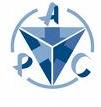Main features: current version: 2.55beta
> Top of the page
Provenance and technicalities:
(*) HEALPix has been developed by K. M. Gorski, E. Hivon, B. D. Wandelt, A. J. Banday, M. Bartelmann, H. K. Eriksen, F. K. Hansen, M. Reinecke and is distributed under the GNU General Public Licence.
> Top of the page
Software
> Top of the page
Contact info/bug tracking
Please contact us and report problems and issues via google bug tracking facility. (external link).> Top of the page
Principal developers
- Radek Stompor (APC, France);
- Mikolaj Szydlarski (INRIA, France; ANR-MIDAS'09);
- Laura Grigori (INRIA, France).
- see Acknowledgements section below for a list of contributors and validators.
> Top of the page
Acknowledgments
This work has been supported in part by- the European Community Marie Curie International Reintergration grant (FP6) from 2006-2008.
- the Agence National de Recherche (ANR) grant MIDAS'09 awarded under the ANR-Calcul Intensif programme, 2010-2012.
- the National Energy Research Scientific Computing Center (NERSC), 2006-present, in the US;
- CCRT, TGCC, and IDRIS under allocations 2011-066647 (in 2011) and 2012-066647 (in 2012), obtained via the GENCI (Grand Equipement National de Calcul Intensif) program in France.
Thanx to:
- the HEALPix guys for HEALPix.
- Ovidiu Hupca for the first GPU version of the inverse spherical harmonic transform, alm2map.
- Chris Cantalupo for the C/F90 interface tricks from the M3 Library.
- Pierre Esterie, and Joel Falcou for help with the development of multi-core and CUDA versions.
- Matt Tristram, Julien Grain and Giulio Fabbian for help in debugging and testing the software.
- Ted Kisner for help with debugging, suggestions of improvements, as well as for
maintaining the library on the supercomputers
at National Energy Research Scientific Computing (NERSC) Center.
> Top of the page
Relevant links
- pureS2HAT -- a set of C-routines allowing for the 'pure multipole' calculations.
- computeXlsAll -- a routine to reduce sets of alm coefficients precomputed and distributed by the S2HAT transforms (multi map, polarized, spin-weighted, etc) to a set of all plausible cross-spectra.
> Top of the page > Home

|
Centre National de la Recherche Scientifique Laboratoire Astroparticule et Cosmologie Equipe de Traitement des Données et Simulations (ADAMIS) |

|
Contact: Radek Stompor (radek(at)apc(dot)univ(dash)paris7(dot)fr) © 2007 rs |